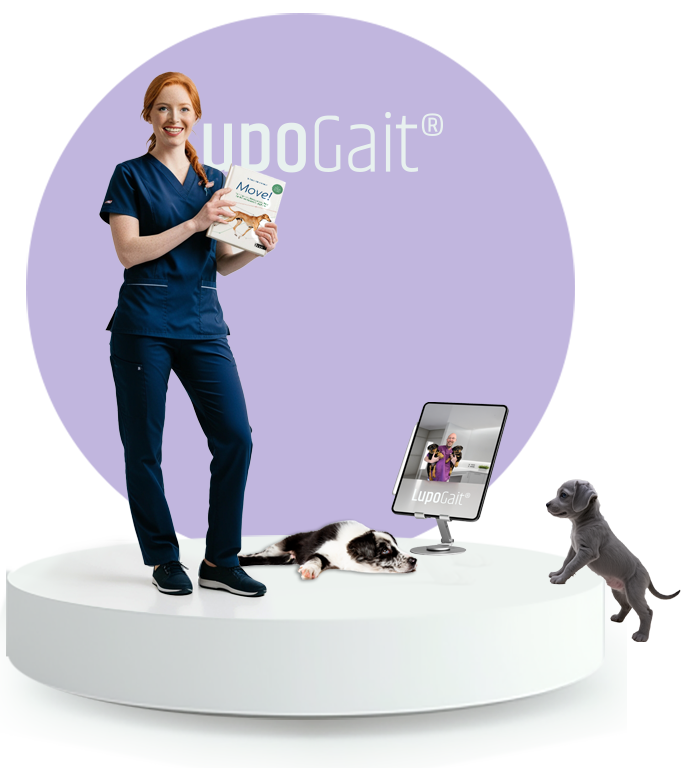When the puppy doesn’t walk smoothly – how gait analysis recognizes early signs
Hip or elbow dysplasia often begins long before it becomes visible. Many puppies do not show any clear symptoms – and yet there are subtle indications in the movement pattern. With modern gait analysis, these subtle deviations can be detected before pain and damage occur. A look at the silent early phase of orthopaedic diseases – and how we can use it to act in good time.
“He looks completely normal”
“He’s walking normally.” You often hear this sentence when young dogs come to the vet’s surgery for a routine check-up. Many puppies appear healthy at first glance – active, playful, with no visible lameness. But it is precisely during this growth phase that many orthopaedic diseases develop behind the scenes. Hip and elbow dysplasia do not develop overnight – they build up slowly. And before a dog is visibly limping or reluctant to move, there are often subtle signs in the gait pattern.
This is precisely where modern gait analysis comes in: It recognizes what the human eye misses – subtle deviations in movement patterns that can indicate an increased risk of joint problems. For puppies in particular, it offers the opportunity to take preventative action – long before permanent damage occurs.

What gait analysis makes visible before it hurts
Gait analysis in puppies is an objective method for recording movement patterns. While we often only perceive lameness or a “non-circular gait” with our eyes, modern systems such as LupoGait can measure precise parameters. These include:
- Stance time and swing phase of the limbs
- Range of motion of the joints (e.g. hips and elbows)
- Symmetry index of the vertical load
- Lateral pelvic movements or altered joint angles
Such deviations can often be measured early on, before the dog shows any pain. Studies show, for example, that puppies with hip dysplasia diagnosed at a later stage already exhibit measurable differences in their movement profile at just a few weeks old – for example in stance time or asymmetrical loading.
Early detection – better help: The key to prevention
Why is this so important? Because the early childhood phase lays the foundation for a healthy skeletal system. If movement abnormalities are recognized and treated at this stage, the risk of manifest dysplasia can be significantly reduced.
Whether it’s physiotherapy, controlled muscle-building training or targeted exercise control: if you know how your puppy is moving, you can intervene in a targeted manner before late damage occurs. This provides vets with valuable information to make well-founded recommendations – without the need for X-rays or invasive procedures.
LupoGait Puppy – early detection at the right time
The LupoGait Puppy program, developed together with the orthoVET dog orthopaedics practice, is specially designed for growing puppies. Using a set of inertial sensors (IMUs), it measures the gait pattern in just a few minutes – without any sedation, treadmill or special room. The data is processed automatically and provides an objective evaluation of gait parameters.
- Measuring time: approx. 10-15 minutes
- Procedure: Attach sensors, allow to run freely, record data
- Evaluation: cloud-based, reproducible, clearly interpretable
This type of gait analysis is unique in its early diagnosis of puppies and offers veterinarians a practical, well-founded basis for decision-making.
Fazit: Wachsen ohne Schmerzen – mit objektiver Hilfe
Not every deviation in movement automatically means a disease. But every abnormality is an indication that we should take seriously. With objective gait analysis, we can enable puppies to develop healthily before problems arise. The technology is there. All we need now is the right time: as early as possible. Find out more about LupoGait Puppy.
Learn more:
Learn more about the technology behind LupoGait